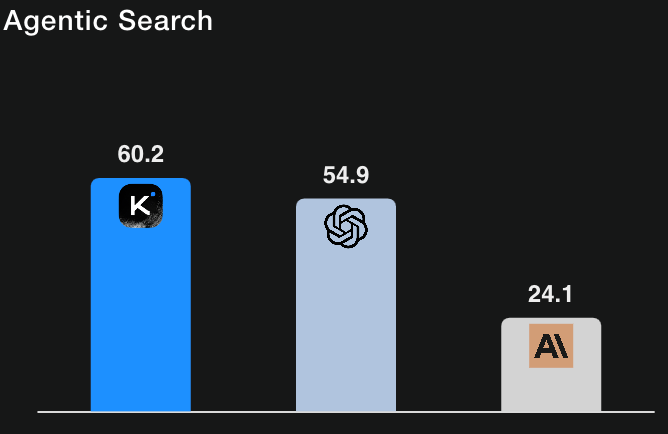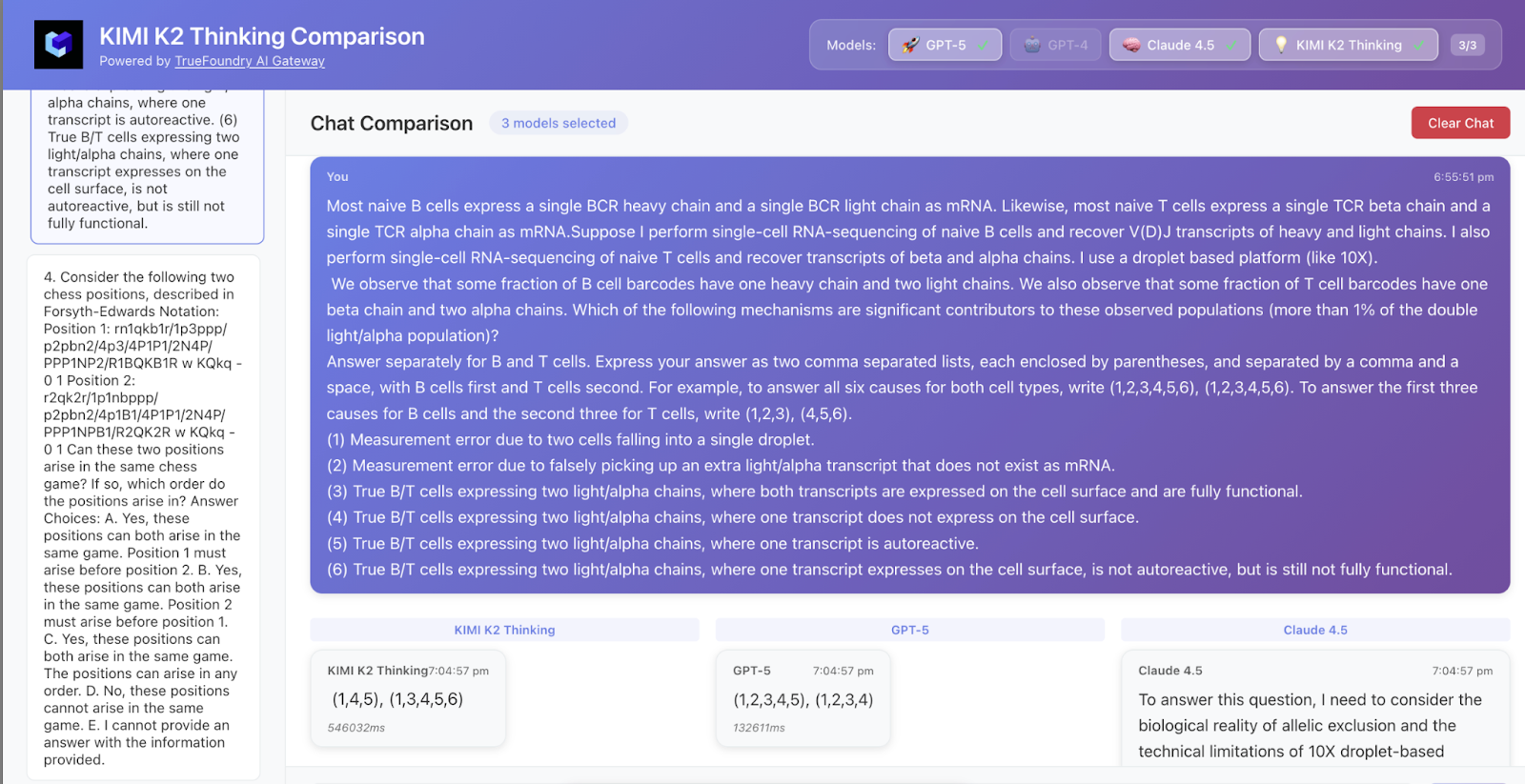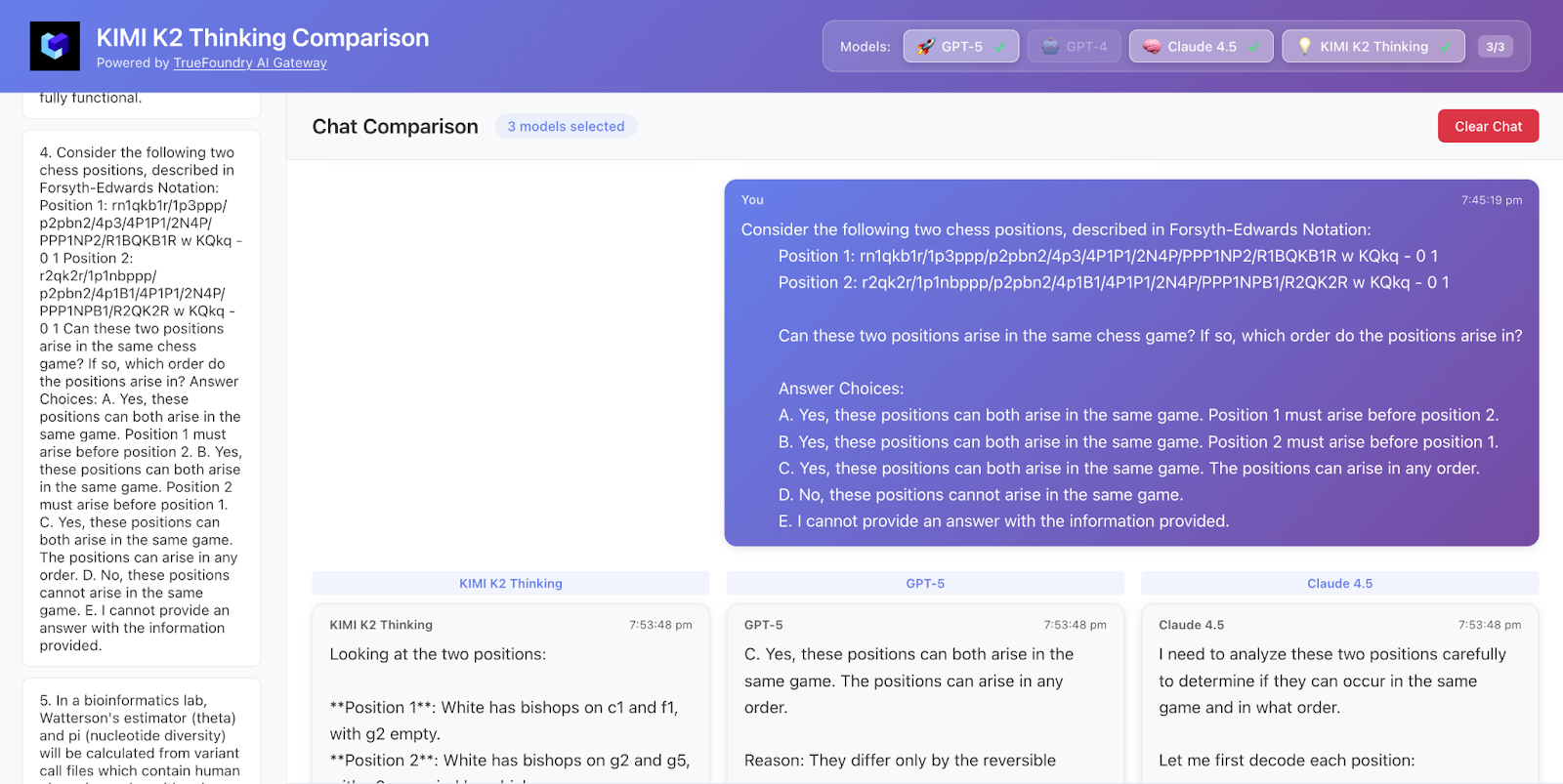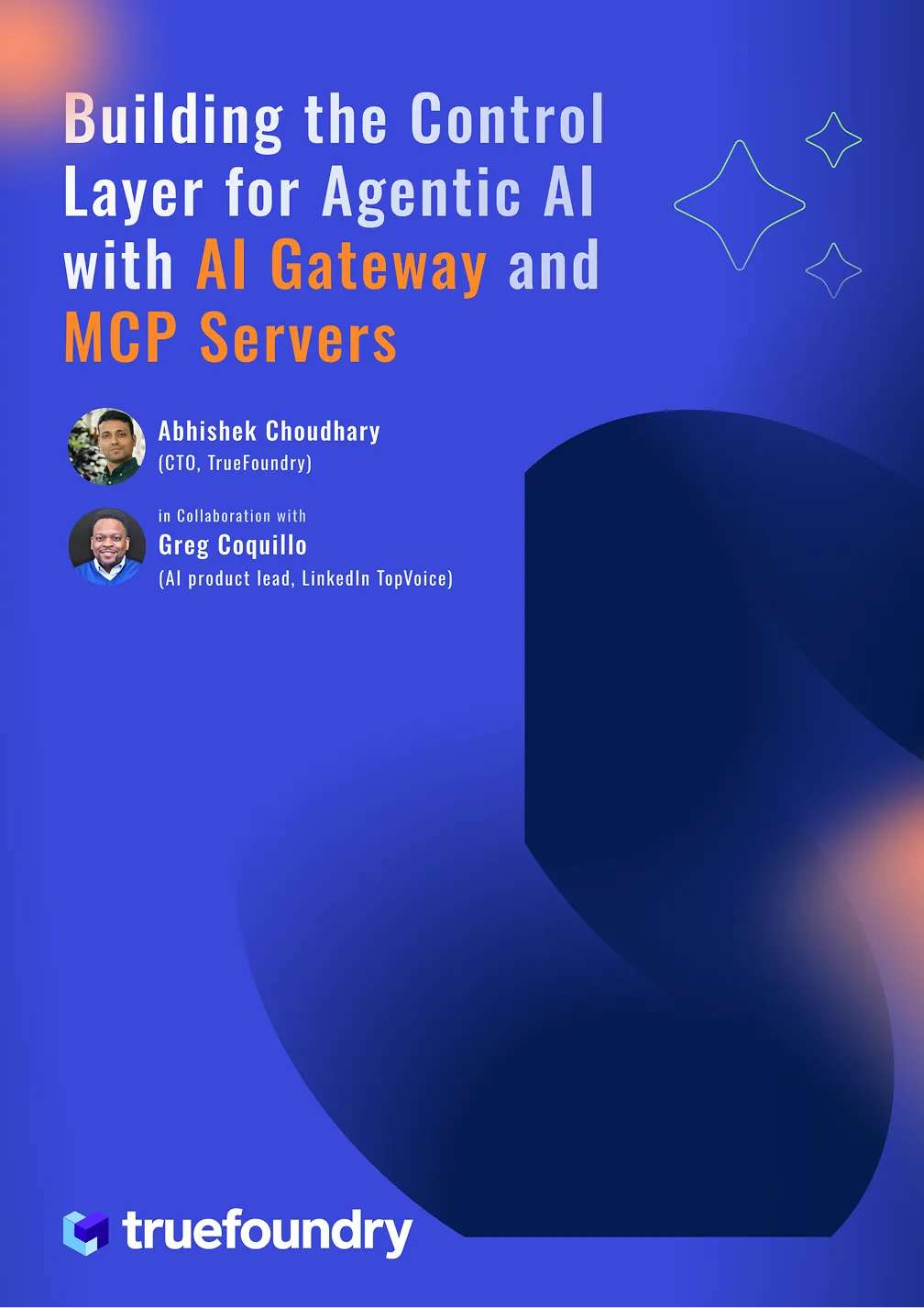Kimi-K2 Thinking: How you can try it right now using Truefoundry AI Gateway
Short version: Kimi-K2 Thinking (Moonshot AI) is an open-weight, tool-aware “thinking” model that pushes multi-step reasoning, long-horizon tool orchestration, and massive context windows. On Humanity’s Last Exam (HLE) and several agentic benchmarks it posts state-leading numbers (particularly when tool access is enabled), making a strong case that the next big frontier in LLMs is thinking + tools + long context, not just raw parameter counts.
Use Truefoundry AI Gateway to try it right now.
Introduction — why “thinking” models matter
Benchmarks like MMLU, coding tests, and chat benchmarks have told us a lot, but they don’t fully measure multi-step reasoning, tool orchestration, or long-horizon planning. A new class of “thinking” models explicitly trains for those abilities: the model must interleave internal step-by-step reasoning with external tool calls (search, code interpreters, web browsing), and maintain coherence for many sequential steps.
Kimi-K2 Thinking is a flagship example of this trend. It’s designed as an agentic system: it reasons, decides to call tools, ingests tool outputs, and continues reasoning — all while keeping context across hundreds of steps. The result: substantial gains on hard “thinking” benchmarks such as HLE and BrowseComp.
What Kimi-K2 Thinking is (short technical tour)
Key technical highlights from the official model card:
- Architecture: Mixture-of-Experts (MoE) with ~1T total parameters and ~32B activated parameters.
- Context window: Massive 256k token context for long-horizon reasoning.
- Tool-orchestration: End-to-end training to interleave chain-of-thought with function/tool calls; designed to survive 200–300 consecutive tool invocations without drift.
- Native INT4 quantization: Quantization-aware training to support INT4 inference with significant speedups without reported accuracy loss.
- Deployment: API and standard inference stacks supported (vLLM, etc).
These elements — MoE scale, huge context, explicit tool orchestration, and efficient low-bit inference — are the building blocks that let Kimi-K2 act like an agent more than a conversational transformer.
About HLE (why this benchmark is meaningful here)
Humanity’s Last Exam (HLE) is intended to be a very challenging exam-style benchmark that stresses genuine reasoning, not retrieval or shortcuts. It contains domain-heavy, often multi-step problems across math, science, engineering, and other subjects. Because HLE’s problems typically require multi-step reasoning and, in some cases, external lookup or computation, it’s an excellent stress test for tool-capable, long-context agents. Kimi-K2’s development emphasized HLE and other agentic benchmarks — the model card highlights HLE as one of its core evaluation targets.
How Kimi-K2 performs on HLE and — the numbers
According to Moonshot AI’s published evaluation results:

Humanity’s Last Exam (Text-only) w/ tools

BrowseComp
For context, GPT-5 (High) at ~41.7% on HLE with tools (their internal re-runs) and Claude Sonnet 4.5 at ~32.0% (thinking mode). The Kimi-K2 results therefore place it ahead of the reported baselines on tool-enabled HLE runs. (All numbers are taken from Moonshot AI’s evaluation table and footnotes.)
Important nuance: the model card carefully documents how tool access, judge settings, token budgets, and context limits were handled; the authors also note that some baseline numbers were taken from official posts while others were re-tested internally. In short: these are strong signals but readers should note they are reported by Moonshot AI and conditioned on the detailed evaluation protocol described with the results.
What we found in our Analysis
We sampled 50 data rows from HLE and here are the results
- Some Sample examples where Kimi K2 Thinking outperformed other models


Kimi K2 got both the answer and logic correct while GPT-5 got only the answer correct and Claude was not correct.
Why the performance jump with tools matters
Kimi-K2’s roughly doubling of HLE performance from no-tools → with-tools (≈24→45%) demonstrates a crucial point:
- Many HLE questions require retrieval/verification, systematic computation, or multi-step external information. A model that’s trained to plan tool calls as part of its chain-of-thought will profit more from tool access than a model that uses tools as an afterthought.
- Long context & stable agentic behavior allow Kimi-K2 to maintain intermediate state, revisit past reasoning steps, and manage many tool outputs without losing coherence. That matters a lot when reasoning chains are long (HLE-style).
- Heavy mode (parallel trajectory rollouts + reflective aggregation) further increases robustness and final-answer quality on these hard items.
Put simply: the HLE gains suggest that the core problem is how a model reasons and uses tools, not just raw model size.
Practical takeaways
- If your workload involves multi-step research, automated reasoning with web lookups, long multi-stage tasks, or agentic workflows (workflow automation, autonomous coding + validation, long investigative tasks), a thinking-first model such as Kimi-K2 is worth trialing.
- For one-shot conversational tasks or constrained deployment without external tool access, the advantage shrinks — choose tooling and model according to your requirements.
- The open-weight nature and modern quantization mean teams can experiment without the black-box friction of some proprietary stacks.
- While deploying this large model is out of the question for a lot of people you can experiment on it using the truefoundry within a few clicks.
Conclusion — try it yourself using TrueFoundry AI Gateway
Beyond benchmarks, what’s most exciting is how accessible this kind of capability is becoming. You don’t have to wait months to experiment — you can try it yourself. TrueFoundry AI Gateway makes it easy to access Kimi-K2 Thinking and other cutting-edge models directly, benchmark them on your own data, or integrate them into workflows.
If you want more personalized help, book a demo — the team can walk you through performance, deployment options, cost, and how to evaluate these models on your tasks. We stay current with the market and make sure new models are available for your consumption as fast as possible.
Bottom line: Kimi-K2 Thinking isn’t just another LLM — it’s a visible glimpse at the future of reasoning-capable agents: open, efficient, tool-aware, and tuned for multi-step problem solving. Try it, compare it on your own problems, and see how much difference agentic tool orchestration makes on real tasks.
Built for Speed: ~10ms Latency, Even Under Load
Blazingly fast way to build, track and deploy your models!
- Handles 350+ RPS on just 1 vCPU — no tuning needed
- Production-ready with full enterprise support
TrueFoundry AI Gateway delivers ~3–4 ms latency, handles 350+ RPS on 1 vCPU, scales horizontally with ease, and is production-ready, while LiteLLM suffers from high latency, struggles beyond moderate RPS, lacks built-in scaling, and is best for light or prototype workloads.


















